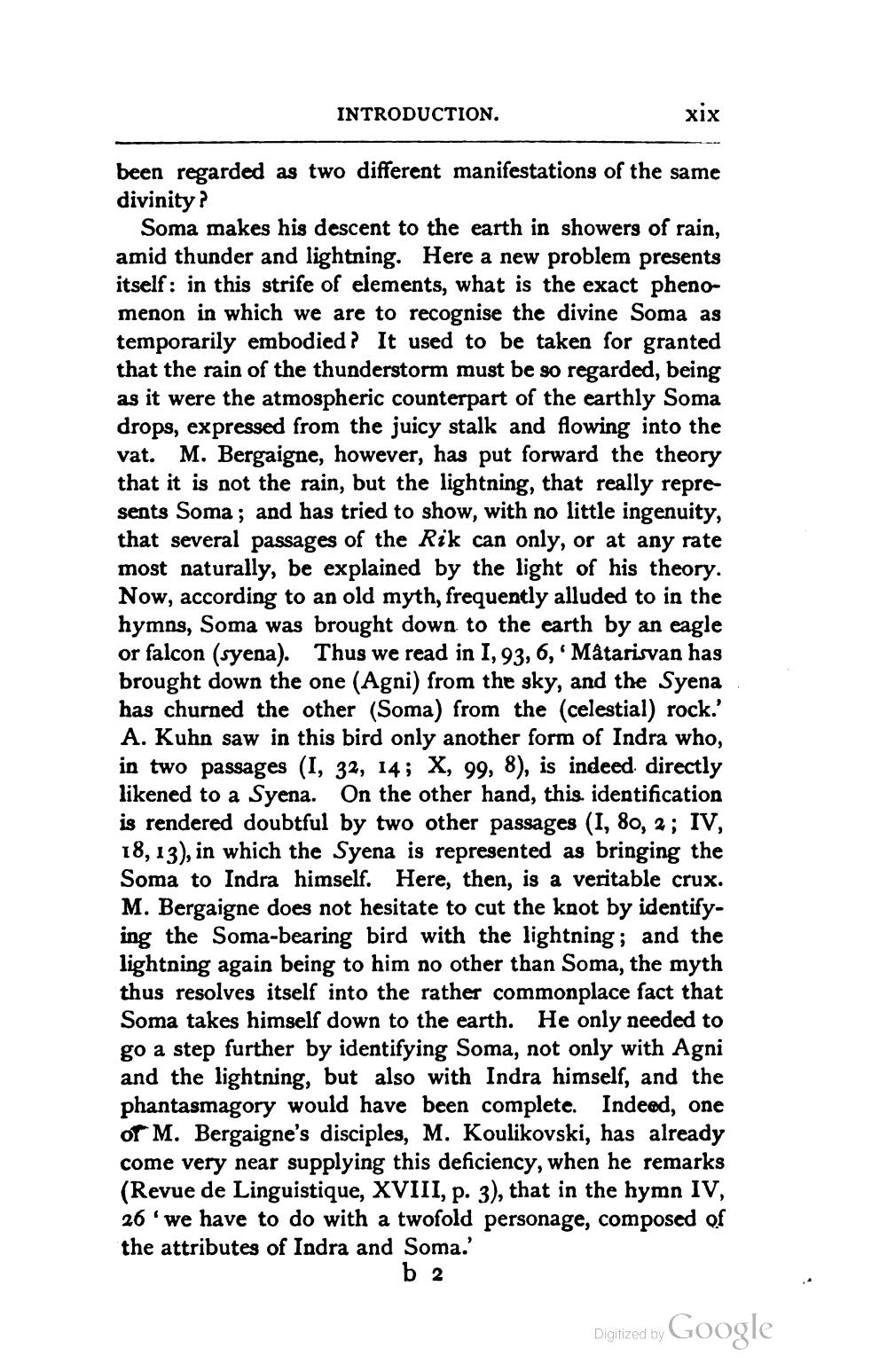________________
INTRODUCTION.
xix
been regarded as two different manifestations of the same divinity?
Soma makes his descent to the earth in showers of rain, amid thunder and lightning. Here a new problem presents itself: in this strife of elements, what is the exact phenomenon in which we are to recognise the divine Soma as temporarily embodied? It used to be taken for granted that the rain of the thunderstorm must be so regarded, being as it were the atmospheric counterpart of the earthly Soma drops, expressed from the juicy stalk and flowing into the vat. M. Bergaigne, however, has put forward the theory that it is not the rain, but the lightning, that really represents Soma; and has tried to show, with no little ingenuity, that several passages of the Rik can only, or at any rate most naturally, be explained by the light of his theory. Now, according to an old myth, frequently alluded to in the hymns, Soma was brought down to the earth by an eagle or falcon (syena). Thus we read in 1, 93, 6, 'Måtarisvan has brought down the one (Agni) from the sky, and the Syena has churned the other (Soma) from the (celestial) rock.' A. Kuhn saw in this bird only another form of Indra who, in two passages (1, 32, 14; X, 99, 8), is indeed directly likened to a Syena. On the other hand, this identification is rendered doubtful by two other passages (1, 80, 2; IV, 18, 13), in which the Syena is represented as bringing the Soma to Indra himself. Here, then, is a veritable crux. M. Bergaigne does not hesitate to cut the knot by identifying the Soma-bearing bird with the lightning; and the lightning again being to him no other than Soma, the myth thus resolves itself into the rather commonplace fact that Soma takes himself down to the earth. He only needed to go a step further by identifying Soma, not only with Agni and the lightning, but also with Indra himself, and the phantasmagory would have been complete. Indeed, one or M. Bergaigne's disciples, M. Koulikovski, has already come very near supplying this deficiency, when he remarks (Revue de Linguistique, XVIII, p. 3), that in the hymn IV, 26'we have to do with a twofold personage, composed of the attributes of Indra and Soma.'
b 2
Digitized by Google




